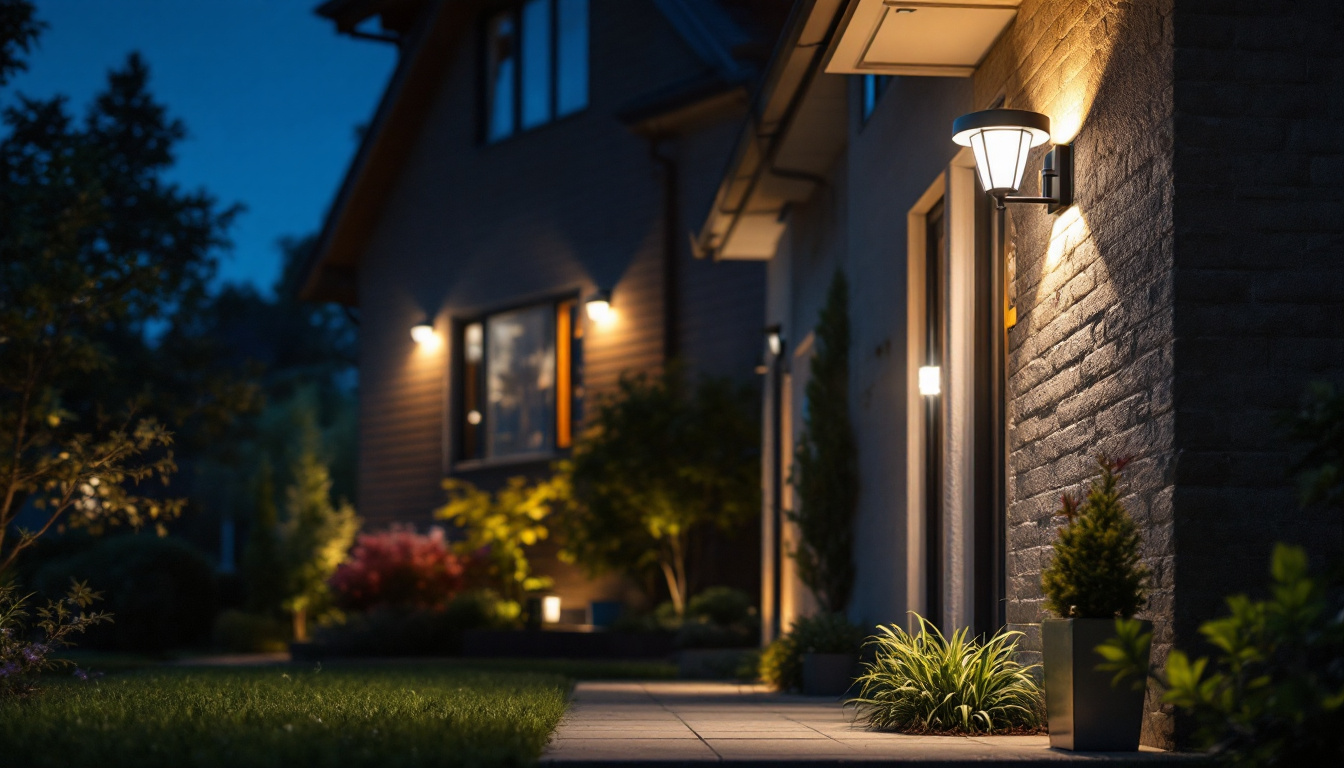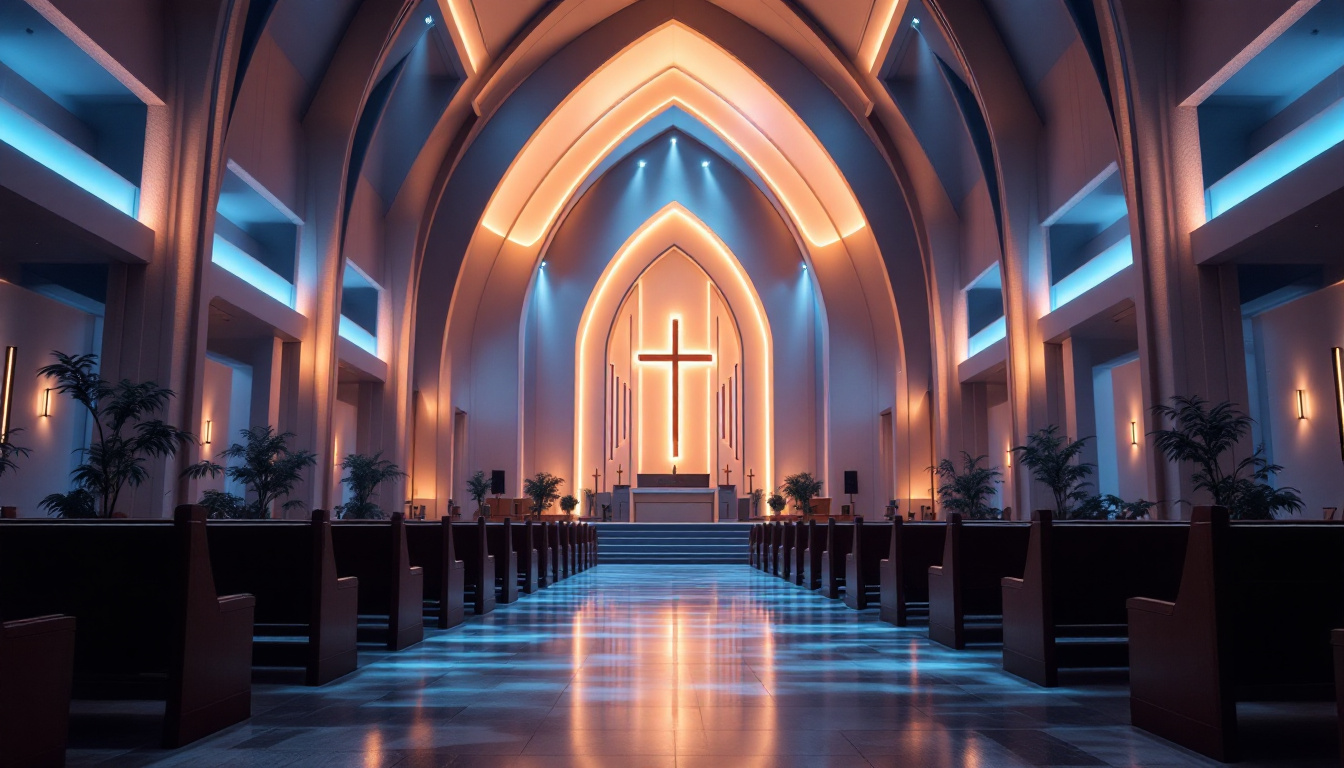

Lighting plays a crucial role in enhancing safety and aesthetics in stairways. For lighting contractors, the task of designing and installing effective lighting solutions for stairs comes with unique challenges. This article delves into the primary obstacles faced by contractors in this specialized field, providing insights and potential solutions to navigate these hurdles effectively.
Stair lighting is not merely about illumination; it is about creating a safe and inviting environment. The unique architectural features of staircases, combined with the need for adequate visibility, make this a specialized area within lighting design. Contractors must take into account various factors, including the height of the stairs, the materials used, and the overall design aesthetic. The choice of lighting can significantly influence the ambiance of the space, transforming a mundane staircase into a stunning focal point that enhances the overall design of the home or building.
In addition to aesthetics, the functionality of stair lighting is paramount. Options such as recessed lighting, wall sconces, or even LED strip lights can be employed to create a layered lighting effect that not only highlights the staircase but also complements the surrounding decor. The color temperature of the lights can also play a crucial role; warmer tones can create a cozy atmosphere, while cooler tones may lend a more modern and sleek feel. Therefore, careful consideration of the lighting design can elevate the entire experience of navigating the staircase.
One of the foremost challenges in stair lighting is ensuring safety. Poorly lit staircases can lead to accidents, making it imperative for contractors to provide adequate illumination. This involves not only choosing the right fixtures but also strategically placing them to eliminate shadows and dark spots. Contractors often have to balance brightness with glare, ensuring that the lighting is effective without being harsh on the eyes. Incorporating features such as motion sensors can also enhance safety by automatically illuminating the stairs when someone approaches, thereby reducing the risk of falls during nighttime hours.
Moreover, the use of non-slip materials for stair treads in conjunction with effective lighting can further enhance safety. For instance, brightly colored or textured treads can be illuminated to provide additional visual cues, guiding users safely up and down the stairs. In residential settings, families with children or elderly members may require even more attention to detail, necessitating a thoughtful approach to both lighting and stair design to ensure that everyone can navigate the space safely.
Another significant challenge is adhering to local building codes and regulations. Different regions may have specific requirements regarding the minimum levels of illumination for stairways. Contractors must stay informed about these regulations to avoid potential legal issues and ensure that their installations are safe and compliant. This often requires extensive research and collaboration with local authorities. Understanding these codes not only helps in avoiding fines but also ensures that the lighting solutions provided are effective and meet the needs of the occupants.
Additionally, building codes may dictate the types of materials and fixtures that can be used, especially in commercial spaces where higher traffic and safety standards are expected. This can include restrictions on the use of certain types of bulbs or fixtures that may pose a fire hazard or require specific electrical configurations. As such, contractors must be well-versed in both the technical and regulatory aspects of stair lighting to deliver solutions that are not only beautiful but also compliant and safe for all users.
The selection of lighting fixtures is a critical aspect of any stair lighting project. Contractors must consider various factors, including the type of light source, fixture design, and energy efficiency. The right lighting not only illuminates the space but also enhances safety, guiding individuals up and down the stairs with confidence. Therefore, careful thought must be given to how lighting can be utilized to create a welcoming and secure environment.
Contractors can choose from a variety of lighting sources, including LED, incandescent, and fluorescent lights. Each type has its advantages and disadvantages. For instance, LEDs are energy-efficient and have a longer lifespan, making them a popular choice for many contractors. However, they can sometimes produce a harsh light that may not be suitable for all environments. Understanding the nuances of each type of lighting source is essential for contractors to make informed decisions that meet their clients’ needs. Additionally, the color temperature of the light source can significantly impact the ambiance; warmer tones can create a cozy atmosphere, while cooler tones may lend a more modern and clinical feel. Therefore, contractors should also consider the intended mood of the space when selecting lighting sources.
The design of the lighting fixtures also plays a significant role in the overall aesthetic of the staircase. Contractors must work closely with architects and interior designers to ensure that the chosen fixtures complement the space. This may involve selecting fixtures that blend seamlessly with the staircase’s design or choosing statement pieces that enhance the visual appeal. The challenge lies in finding a balance between functionality and aesthetics. Furthermore, the materials used in the fixtures can also influence the overall design; metal finishes, glass elements, or even wood accents can all contribute to a cohesive look. It’s essential to consider how the lighting fixtures will interact with other design elements in the staircase area, such as railings, wall colors, and flooring. By doing so, contractors can create a harmonious environment that not only serves its purpose but also captivates the eye.
Installation can present various challenges, especially in existing structures. Contractors must navigate tight spaces, uneven surfaces, and other obstacles that can complicate the installation process. Proper planning and execution are crucial to overcoming these challenges.
Staircases often have limited space, making it difficult to install lighting fixtures without disrupting the flow of the area. Contractors may need to employ creative solutions, such as recessed lighting or wall-mounted fixtures, to maximize the available space. This requires a thorough understanding of the staircase’s layout and the ability to visualize how different lighting options will fit into the design.
Electrical considerations are another significant challenge. Contractors must ensure that the existing wiring can support the new lighting fixtures. This may involve upgrading the electrical system or installing additional circuits, which can add complexity and cost to the project. Proper assessment of the electrical infrastructure is essential to avoid potential issues down the line.
As sustainability becomes increasingly important in the construction industry, lighting contractors face the challenge of providing energy-efficient solutions. Clients are often looking for ways to reduce their energy consumption and lower their utility bills, making it essential for contractors to stay informed about the latest energy-efficient technologies.
Smart lighting solutions offer an excellent opportunity for contractors to enhance energy efficiency. These systems allow users to control their lighting remotely, set schedules, and adjust brightness levels according to their needs. However, integrating smart technology into stair lighting can be complex, requiring contractors to have a solid understanding of both lighting design and technology. This challenge can be overcome through continued education and training in smart lighting systems.
Contractors must also prioritize the selection of energy-efficient fixtures. LED lights, for example, consume significantly less energy than traditional incandescent bulbs, making them a popular choice. However, the initial cost of LED fixtures can be higher, which may deter some clients. Educating clients about the long-term savings associated with energy-efficient lighting can help contractors overcome this hurdle and promote sustainable practices.
Effective communication is vital in any contractor-client relationship, but it becomes even more critical in stair lighting projects. Clients often have specific expectations regarding the aesthetics and functionality of the lighting, and it is essential for contractors to manage these expectations throughout the project.
Contractors must take the time to understand their clients’ needs and preferences, ensuring that they set realistic expectations from the outset. This involves discussing the limitations of the space, the capabilities of different lighting solutions, and the potential challenges that may arise during installation. By fostering open communication, contractors can build trust and ensure that clients feel informed and involved in the decision-making process.
Post-installation support is another crucial aspect of client communication. Contractors should be prepared to offer guidance on how to use and maintain the lighting systems effectively. This may include providing instructions on smart lighting features or recommending maintenance schedules to ensure the longevity of the fixtures. By offering ongoing support, contractors can enhance client satisfaction and build long-term relationships.
To overcome the challenges associated with stair lighting, contractors can explore innovative solutions that enhance both functionality and aesthetics. Embracing new technologies and design trends can set contractors apart in a competitive market.
Incorporating motion sensors into stair lighting systems can significantly improve safety and energy efficiency. These sensors automatically turn on lights when someone approaches the staircase, ensuring that the area is well-lit without wasting energy when not in use. This technology not only enhances safety but also appeals to environmentally conscious clients.
Contractors can also experiment with creative lighting techniques, such as uplighting or downlighting, to create visually stunning effects. These techniques can highlight architectural features of the staircase while providing adequate illumination. By thinking outside the box, contractors can offer unique solutions that elevate the overall design of the space.
Lighting contractors face a range of challenges when it comes to designing and installing lighting solutions for stairs. From ensuring safety and compliance with building codes to selecting the right fixtures and addressing installation obstacles, the complexities of stair lighting require a thoughtful and informed approach. By staying abreast of industry trends, embracing innovative technologies, and maintaining open communication with clients, contractors can successfully navigate these challenges and deliver exceptional lighting solutions that enhance both safety and aesthetics.
Ready to tackle the challenges of stair lighting with confidence? Choose LumenWholesale for your next project and benefit from our extensive range of spec-grade lighting products at unbeatable wholesale prices. Say goodbye to middleman markups and hello to superior quality and performance that meets the highest industry standards. With free shipping on bulk orders, you can trust that you’re getting premium lighting solutions at the best value. Don’t compromise on safety, aesthetics, or your bottom line. Wholesale Lighting at the Best Value is just a click away. Elevate your lighting game with LumenWholesale today.

Discover essential tips and expert insights for lighting contractors on enhancing security through effective lighting solutions.

Discover how church light fixtures are revolutionizing the lighting industry with innovative designs and sustainable solutions.

Discover the secrets to maximizing efficiency in warehouse lighting with our comprehensive guide.

Discover the essential reasons why commercial wholesale lighting is a game-changer for lighting contractors.
Get notified when NEW deals are released.
Optimize your budget with wholesale discounts.
Only top-quality, specification-grade lighting products.
No additional costs at checkout - what you see is what you pay.
We understand the unique needs of contractors.